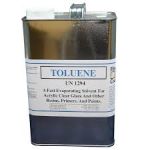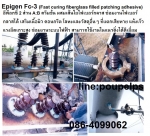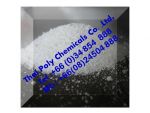Tartaric acid, กรดทาร์ทาริก, กรดทาร์ทาริค, ทาร์ทาริกแอซิด, ทาร์ทาริคแอซิด, ทาร์ทาริกเอซิด |
฿1 |
|
ชื่อผู้ประกาศ : อัศวิน เบอร์โทรศัพท์ : 034854888, 034496284 โทรศัพท์มือถือ : 0800160016 ที่อยู่ : 36/5 ม.9 ต.นาดี อ.เมืองสมุทรสาคร ร้าน TPCC |
นำเข้าและจำหน่าย Tartaric acid, กรดทาร์ทาริก, กรดทาร์ทาริค, ทาร์ทาริกแอซิด, ทาร์ทาริคแอซิด,
ทาร์ทาริกเอซิด, สอบถามข้อมูลเพิ่มเติมได้ที่
ฝ่ายขาย บริษัท
ไทยโพลีเคมิคอล จำกัด โทรศัพท์ 034854888, 034496284 มือถือ 0824504888,
0800160016 โทรสาร 034854899, 034496285
Tartaric
acid, ทาร์ทาริกแอซิด, กรดท์ทาริก
กรดทาร์ทาริก (tartaric acid) เป็นกรดอินทรีย์ (organic acid) ชนิดหนึ่งที่พบตามธรรมชาติในผลไม้บางชนิด เช่น องุ่น มะขาม และเป็นกรดที่พบในไวน์ มีสูตรทางเคมีคือ C4H6O6 อยู่ในรูป L-Tartaric acid อาจเรียกว่า L-2-3-Dihydroxysuecinic acid หรือ L-2,3-Dihydroxybutanedioic, กรดทาร์ทาริกในธรรมชาติพบมากในมะขามโดยเฉพาะมะขามเปรี้ยว และกรดนี้ใช้เป็นส่วนผสมของผงฟู (baking powder) กลุ่มหน้าที่ เสริมฤทธิ์กันหืน จับอนุมูลโลหะ (sequestrant ) อิมัลซิไฟเออร์ (emulsifier) ปรับความเป็นกรดในอาหาร และเครื่องดื่ม
Tartaric
acid is a white crystalline diprotic aldaric acid. It occurs naturally in many plants, particularly grapes, bananas, and tamarinds, is commonly combined with baking soda to function as a leavening agent in recipes, and is one of the main acids found in wine. It is added to other foods to give a sour taste, and is used as an antioxidant. Salts of tartaric acid are known as tartrates. It is a
Tartaric
acid was first isolated from potassium tartrate, known to the ancients as tartar, circa 800 AD, by the alchemist Jabir ibn Hayyan. The modern process was developed in 1769 by the Swedish chemist Carl Wilhelm Scheele. Tartaric acid played an important role in the discovery of chemical chirality. This property of tartaric acid was first observed in 1832 by Jean Baptiste Biot, who observed its ability to rotate polarized light. Louis Pasteur continued this research in 1847 by investigating the shapes of ammonium sodium tartrate crystals, which he found to be chiral. By manually sorting the differently shaped crystals under magnification, Pasteur was the first to produce a pure sample of levotartaric acid. Tartaric acid may be most immediately recognizable to wine drinkers as the source of "wine diamonds", the small potassium bitartrate crystals that sometimes form spontaneously on the cork. These "tartrates" are harmless, despite sometimes being mistaken for broken glass, and are prevented in many wines through cold stabilization. The tartrates remaining on the inside of aging barrels were at one time a major industrial source of potassium bitartrate. Tartaric acid plays an important role chemically, lowering the pH of fermenting "must" to a level where many undesirable spoilage bacteria cannot live, and acting as a preservative after fermentation. In the mouth, tartaric acid provides some of the tartness in the wine, although citric and malic acids also play a role. Applications, Tartaric acid and its derivatives have a plethora of uses in the field of pharmaceuticals. For example, tartaric acid has been used in the production of effervescent salts, in combination with citric acid, in order to improve the taste of oral medications. The potassium antimonyl derivative of the acid known as tartar emetic is included, in small doses, in cough syrup as an expectorant. Tartaric acid also has several applications for industrial use. The acid has been observed to chelate metal ions such as calcium and magnesium. Therefore, the acid has served in the farming and metal industries as a chelating agent for complexing micronutrients in soil fertilizer and for cleaning metal
Tartaric
acid is an organic acid that is present in plants, including grapes, tamarinds, and bananas. It is a diprotic acid, which means that it has two hydrogen atoms on each of its molecules that can be ionized in water. Tartaric acid salts are called tartrates. The first form of this acid, derived from potassium tartrate, was isolated in the early part of the ninth century by Jabir ibn Hayyan. The Persian-born Hayyan was responsible for a number of firsts in the field of chemistry. Swedish chemist Carl Wilhelm Scheele later developed the modern method for obtaining this substance in 1769. This acid is naturally-occurring, but can also be synthetically reproduced. Two forms of tartaric acid, levotartaric acid and mesotartaric acid, can be created artificially. The first pure levotartaric acid sample was created by Louis Pasteur in 1847. One interesting property of tartaric acid is that it is chiral. This means that its internal structure does not have a plane of symmetry, and that it also has a mirror-image that cannot be superimposed. Chiral mirror-images, also known as enantiomers, are often compared to human hands. They are identical in composition, but not in form. The most common reason a molecule displays chilarity is the presence of an asymmetrical carbon atom, which is a carbon atom that is attached to four other atoms or groups of atoms. The most common use of tartaric acid is as a food additive. It is often added to certain kinds of candy to give it a sour taste. Cream of tartar, known chemically as potassium bitrate, is typically used to stabilize egg whites, and as an active ingredient in baking powder. This acid is also found in wine, and is responsible for wine diamonds, which are small potassium bitartrate crystals that occasionally form on wine corks. This substance is also used as an emetic to induce vomiting, and as a laxative. In addition, it functions as an antioxidant. This means that it limits or prevents the oxidization of molecules in the body, in order to prevent the formation of free radicals. High levels of tartaric acid can be dangerous, because it can act as a muscle toxin. When ingested in certain amounts, it inhibits the creation of malic acid, and an overdose can cause paralysis or death. A lethal dose in humans is approximately 7.5 grams (g) per kilogram (kg). This means that a human weighing 70 kg would need to ingest at least 500 g of it, for it to become toxic. TARTARIC ACID, also dihydroxy-succinic acid, organic acid of formula C4H6O6, found in many plants and known to the early Greeks and Romans as tartar, the acid potassium salt derived as a deposit from fermented grape juice. The acid was first isolated in 1769 by the Swedish chemist Carl Wilhelm Scheele, who boiled tartar with chalk and decomposed the product with sulfuric acid. Fermentation of the juices of grapes, tamarinds, pineapples, and mulberries produces, on the inner surface of the container, a white crust of potassium acid tartrate known as argol, or lees. Argol, boiled with dilute hydrochloric acid, precipitates as calcium tartrate when calcium hydroxide is added. Upon addition of dilute sulfuric acid, dextrotartaric acid is liberated, which rotates the plane of polarized light to the right. Dextrotartaric acid has a m.p. of 170 (338oF) and is extremely soluble in water and alcohol and insoluble in ether. Another variety, called levotartaric acid, is identical to dextrotartaric acid except that it rotates the plane of polarized light to the left. This acid was first prepared from its sodium ammonium salt by the French chemist Louis Pasteur. Tartaric acid synthesized in the laboratory is a mixture of equal amounts of the dextro and levo acids, and this mixture, called also racemic tartaric acid, does not affect the plane of polarized light. A fourth variety, mesotartaric acid, also without effect on the plane of polarized light, is said to be internally compensated. Tartaric acid, in either the dextrorotary or racemic form, is used as a flavoring in foods and beverages. It is used also in photography, in tanning, and as potassium sodium tartrate, also known as Rochelle salt, as a mild laxative. Potassium hydrogen tartrate, also called cream of tartar, is a pure form of argol that is used in baking powders and in various treatments of metals. Antimony potassium tartrate, also called Tartar emetic, Antimony potassium tartarate, also known as Tartar emetic, is used as snail fever-resistant drugs in the pharmaceutical industry, and in treatments distributed of plant acids, with a number of food and industrial uses. Along with several of its salts, cream of tartar (potassium hydrogen tartrate) and Rochelle salt (potassium sodium tartrate), it is obtained from by-products of wine fermentation. In a partially purified form, tartar was known to the ancient Greeks and Romans; the free acid was first isolated in 1769 by Swedish chemist Carl Wilhelm Scheele. The lees, or sediments, and other waste products from fermentation are heated and neutralized with calcium hydroxide; the precipitated calcium tartrate is then treated with sulfuric acid to produce free tartaric acid. Rochelle salt is prepared from the crude crystalline potassium acid salt, called argol, by neutralization with sodium carbonate. Purified cream of tartar comes chiefly from the filtrates from production of the acid and Rochelle salt. Tartaric acid is a white crystalline diprotic organic acid. The compound occurs naturally in many plants, particularly in grapes, bananas, and tamarinds. It is also one of the main acids found in wine. Tartaric acid can be added to food when a sour taste is desired. It is also used as an antioxidant. Salts of tartaric acid are known as tartarates. The chemical is a dihydroxy derivative of succinic acid. Tartaric acid is found in cream of tartar and baking powder. The chemical compound is used in silvering mirrors, tanning leather, and in Rochelle Salt. In medical analysis, tartaric
Applications
using Tartaric Acid
Tartaric
acid is found in cream of tartar, which is used in making candies and frostings for cakes. Tartaric acid is also used in baking powder where it serves as the source of acid that reacts with sodium bicarbonate (baking soda). This reaction produces carbon dioxide gas and lets products ?rise,? but it does so without the ?yeast? taste that can result from using active yeast cultures as a source
Tartaric
acid is used in silvering mirrors, tanning leather, and in the making of Rochelle Salt, which is sometimes used as a laxative. Blue prints are made with
In
medical analysis, tartaric acid is used to make solutions for the determination of glucose. Common esters of tartaric acid are diethyl tartarate and dibutyl tartrate. Both are made by reacting tartaric acid with the appropriate alcohol, ethanol or n-butanol. In the reaction the Hydrogen of the COOH acid group is replaced with an ethyl group (diethyl tartarate) or butyl group (dibutyl tartarate.
สอบถามข้อมูลเพิ่มเติมได้ที่
ฝ่ายขาย
Thai
Poly Chemicals Co., Ltd.
บริษัท
ไทยโพลีเคมิคอล จำกัด
ที่อยู่36/5
ม.9 แขวง/ตำบลนาดี เขต/อำเภอเมืองสมุทรสาคร จังหวัดสมุทรสาคร รหัสไปรษณีย์74000
Tel.:
034854888, 034496284
Fax.:
034854899, 034496285
Mobile:
0824504888, 0800160016
Website
: www.thaipolychemicals.com
Email1 : thaipolychemicals@hotmail.com
Email2 : info@thaipolychemicals.com
Tartaricทาร์ทาริกเอซิดทาร์ทาริคแอซิดacidทาร์ทาริกแอซิดกรดทาร์ทาริคกรดทาร์ทาริก

















